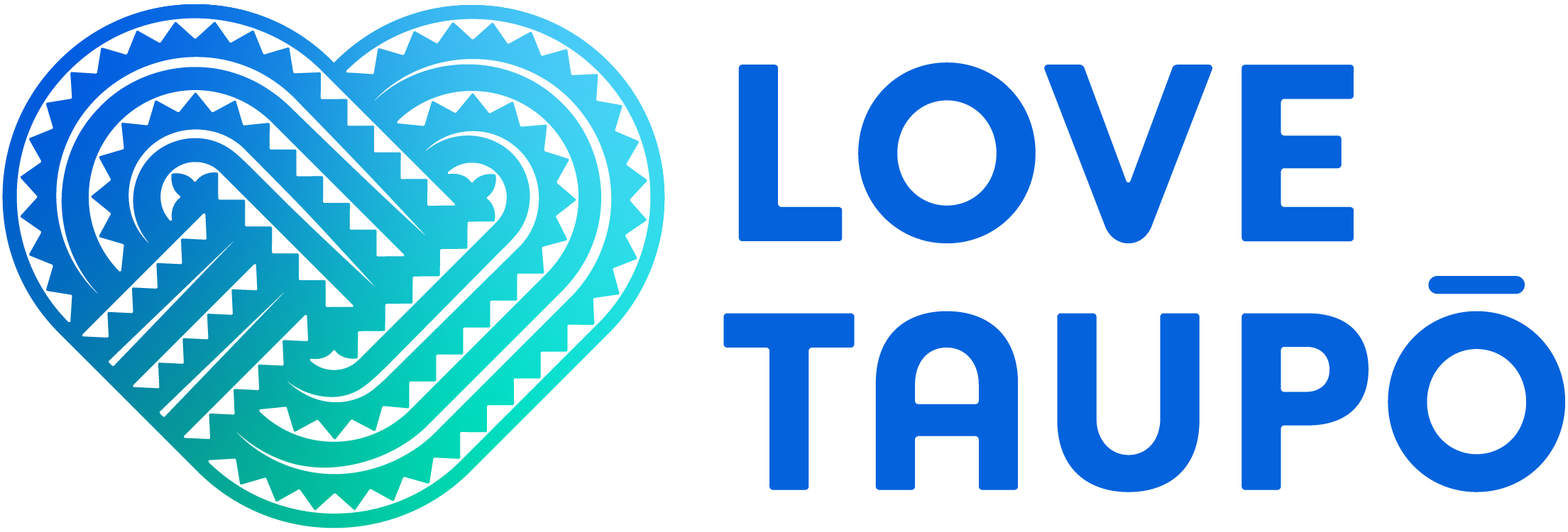Voted Bird of the Year in 2025, the kārearea — New Zealand’s native falcon is a species in serious trouble and a conservation passion for this Taupō local.
Man and bird met when the kārearea was a vulnerable orphan, just a few weeks old. Since 2021, Tāne (Ngati Tuwharetoa, Ngati Pikiao) has been working with Wingspan Bird of Prey Centre as a volunteer, watching over needy chicks and nurturing them until they are old enough to fly away.
However, this particular bird, Te-haukerekere decided to stick around and claim Tauhara as its territory.
“It’s become home for him,” Tāne says. “It’s like having an adopted child.”
The fledglings are placed inside a pātaka manu, like a small tree hut, tucked beneath pine trees at the foot of the maunga (mountain). The occupants are screened from predators and hand fed from above, as they would be by a mother bird. Tāne will visit every day, to deliver wild-caught food and monitor their health until they are old enough to leave the nest. Most disperse quickly, in search of territory they can claim, though their surrogate human father never stops watching for them.
The determined one
“I go up there daily, mainly to observe. Because I believe, if you want to be an expert at anything, you have to observe daily. Rather than going away and getting a certificate, you need to live life with that bird.”
As far as Tāne can see, Te-haukerekere has lived up to his name, which means determined one.
“I named him to encourage our youth to not give up. You have to be determined to fight through life and you have to get out in nature to re-energise, take a break, take a breath.”
Often, the orphaned birds arrive in groups of two or three siblings. This one survived on his own. Tāne was thrilled when Te-hau partnered with a wild mate that subsequently laid three eggs, and he was devastated when the eggs were found crushed by an unknown intruder. A few weeks later, the female was found dead.
“I can only guess what happened or why but have no proof, which is why observations are important. I was really gutted. I still am, even today. You spend all that time with them, they’re like your friends.”
Sharing the delight
Naturally, Tāne is not giving up. He is determined to celebrate and protect the species through his street art, his conservation work and by sharing his delight with local residents and the visitors who use the popular walking trail on Mt Tauhara.
“I talk to people all the time up there. Most people think it’s a hawk, they don’t know we have a native falcon and falcons are rare, we have fewer falcons in our country than kiwi.
“I want people to know about these birds. They’re the top of the food chain, they’re kaitiaki (guardians), part of maintaining balance in nature. Once upon a time we had the world’s largest eagle here and now they’re extinct. The native falcon has taken on that role as apex predator but, without us looking after him, I fear he might become extinct like his tipuna (ancestors).”
Cave art
While both Tāne’s parents fostered his love for the natural world, it was his schoolteacher mother Kim Lawless who taught him to identify birds and other wildlife as a boy. Before she died, when Tāne was just 16, Kim monitored native bats as a volunteer field researcher and was fascinated by the native wood rose pua o te reinga.
Her interests and his are woven into most of the 12 murals he has painted around Taupō.
At Taupō Primary School, children have studied the giant te hōkioi (Haast’s eagle) painted on one street-facing building in the school grounds. The same raptor is connected to Tāne’s artwork on the eastern side of town, where a pedestrian tunnel has been transformed into a cave that is adorned by renditions of ancient Māori rock art, and stalked by extinct flightless birds.
“Moa bones were dug up around here a few years ago so I thought, gee, why not create a moa cave. It’s a little walk-through story of what we had here centuries ago. And of course the Haast’s eagle hunted the moa.”
A family affair
Tāne says it is the support of his artist partner Ebony Keremete that enables him to cram so much into a day. Ebony has also helped with some of his murals–he has painted at least a dozen–alongside sons Kori and Keanu, while baby Te Kāeaea watches on.
He likes to keep the family involved in his art and conservation work and recalls how another bird of prey captivated him in childhood.
“The ruru (native owl) was guardian of our pā (village) and I would often feed it by throwing bugs up in the air for it. As I got older, it was the karearea I was drawn to. One day, it just showed up in the forest when I was with my children; it landed right by the car door.”
Tāne Lawless
Tāne took the bird’s appearance as a sign he needed to do more to help the species. It’s a commitment he continues as a conservation advocate on Māori trust boards, with active field and research work, and through his art.
“Working with native wildlife is my passion and I like to incorporate conservation messages into my art. If you can build awareness out of your passion, why not?”
View some of Tāne’s street art and find it on a map here https://taupostreetart.com, alongside work from other Graffiato festival artists.
Natural wonders—Tāne’s pick of easily accessible Taupō trails
Just a 10-minute drive from downtown Taupō, you’re in this other world. The trail starts out through farmland and winds uphill for 2.8 km, to a summit with amazing views over the lake and mountains. I do some trapping up there and there’s plenty of birdlife, including toutouwai (North Island robin) and the miromiro (tomtit), which are both small ground foragers. And of course, it’s the home of Te-haukerekere.
Whakamoenga Point
There are plenty of shorter and longer trail options to reach this beautiful spot. You walk down through the bush to the lake edge, where the water is very clear and you have impressive views across to the mountains. The famous Ngātoroirangi Mine Bay rock carvings are immediately below and it’s a great spot for a summer swim. But I love it for the history; there’s a great story about a chief’s wife who swam from here to the far side of the lake with her baby on her back, to evade a war party. Look out for the riroriro (grey warbler)—it’s a beautiful bird. Over the summer two species of cuckoo migrate here and take over the riroriro nests.
This one is right on the edge of town, with flat, easy walking trails that take you alongside the Waikato River and past the natural hot pools in Otumuheke Stream, to the mighty Huka Falls. Keep an eye out for the karearea pair that have made their home in this area.
Need a snack?
My favourite place to grab a local treat is Kefi on Horomatangi St–they’ve got really tasty healthy options in the cabinet. Or, if it’s Sunday, I’ll go to the Kai Licious stand at the weekend market, for a rewena burger.



